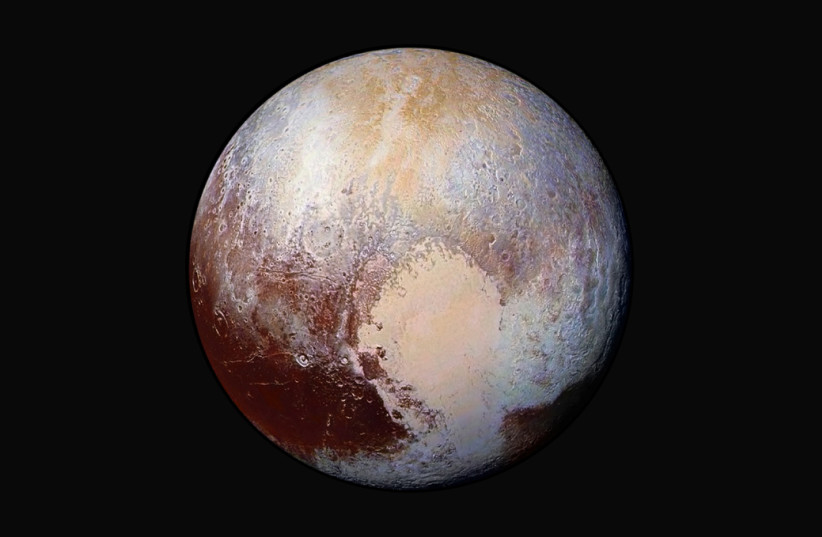Two relatively small icy dwarf planets in the outermost edges of the Solar System are geologically active, meaning they have the potential to support life, according to two new recent studies.
The dwarf planets in question, Eris and Makemake, are both found in the Kuiper Belt past Neptune's orbit and are far from the Sun's warmth, similar to fellow dwarf planet Pluto.
The findings of these studies were published in the academic journal Icarus.
Life past Neptune? The Kuiper Belt and geothermal Activity
So why is this so important? There are three important factors that first need to be understood: What is the Kuiper Belt, what are dwarf planets, and what is geothermal activity?
First, the Kuiper Belt.

There are different regions of the Solar System, with the Sun surrounded by the orbit of the eight planets and the asteroid belt. But beyond the final planet from the Sun, Neptune is an icy ring known as the Kuiper Belt. This is a vast, largely unknown region of the Solar System, on the fringes before an even more distant and icy region known as the Oort Cloud.
Like the asteroid belt, this is filled with the fragments of the creation of the Solar System, the last relics that never managed to form into planets. Only a few of these icy bodies, Pluto and Arrokoth, have ever been visited by spacecraft.
Some of these objects in the Kuiper Belt, like Pluto, are called dwarf planets. These objects are theoretically large enough enough to be considered planets and have been rounded out by gravity, but they can't be considered planets because their orbits around the Sun aren't clear, a phenomenon dubbed orbital dominance.
Now, geothermal activity. This term essentially means that things are happening beneath a planet's surface - or that of a moon or dwarf planet - that creates heat similar to the Earth's core.
To put it another way, if there is geothermal activity, then there is heat - and not just heat limited to what is provided by the Sun.
For anything far out in the Kuiper Belt, there isn't a lot of sunlight to go around. Any heat must, therefore, be geothermal. But could that be possible?
The answer to that is yes, and we've seen it before. Pluto, the most famous dwarf planet of all and formerly the ninth planet of the Solar System, is known to be geologically active. When scientists gathered data after the flyby of the New Horizons mission in 2015, they were able to determine a number of vast and diverse geological features indicative of geothermal activity. It is even possible that a vast subsurface ocean exists underneath the surface, with some of the mountain peaks on the surface being cryovolcanoes, which, despite being "ice" volcanoes, still require heat.
But now, let's take a look at the two dwarf planets that are the focus of the recent studies: Eris and Makemake.
For a dwarf planet, Eris is huge, even more massive than Pluto. Makemake is smaller, being the third-largest dwarf planet after Pluto.
These two have not been visited by any spacecraft before, so less information is known about them, but scientific consensus seemed to point to them being dead, that is to say, devoid of any geothermal activity.
But now, scientists seem to think otherwise.
This is all thanks to NASA's James Webb Space Telescope, which is equipped with an array of advanced scientific tools, including the means to analyze chemical compositions. This is done by studying the sunlight reflected off the dwarf planets and seeing how the different chemicals influence the wavelengths of the light.
Sure, scientists have done this before, but the James Webb Space Telescope can go even deeper, seeing a greater range of the infrared spectrum.
What they found was methane and carbon. Or, more specifically, methane, which has one of its hydrogen atoms replaced with deuterium.
Deuterium is a hydrogen isotope believed to have been formed by the Big Bang. Studying the ratio of deuterium can indicate where the methane came from.
The idea is that the methane had a very high amount of deuterium, it would be what was known as primordial methane, meaning it likely came from comets or other external sources.
But the deuterium ratio was far too low for that to be the case. Rather, most of the methane must have been produced on the planet itself, which itself would require geothermal activity.
So what does this mean? It could mean that these icy dwarf planets could be so warm that they may have active cryovolcanoes or even oceans of liquid water beneath the surface.
Since geothermal power is essential for determining a world's possible activity, it means that places previously thought to be utterly inhospitable may have more potential than previously believed.
Of course, this is still speculation and would need to be confirmed by further research. But it does go to show that we have a lot more to learn about the objects of the Kuiper Belt and reaffirms the potential of the James Webb Space Telescope to shed light on many more of the mysteries of the universe around us.
